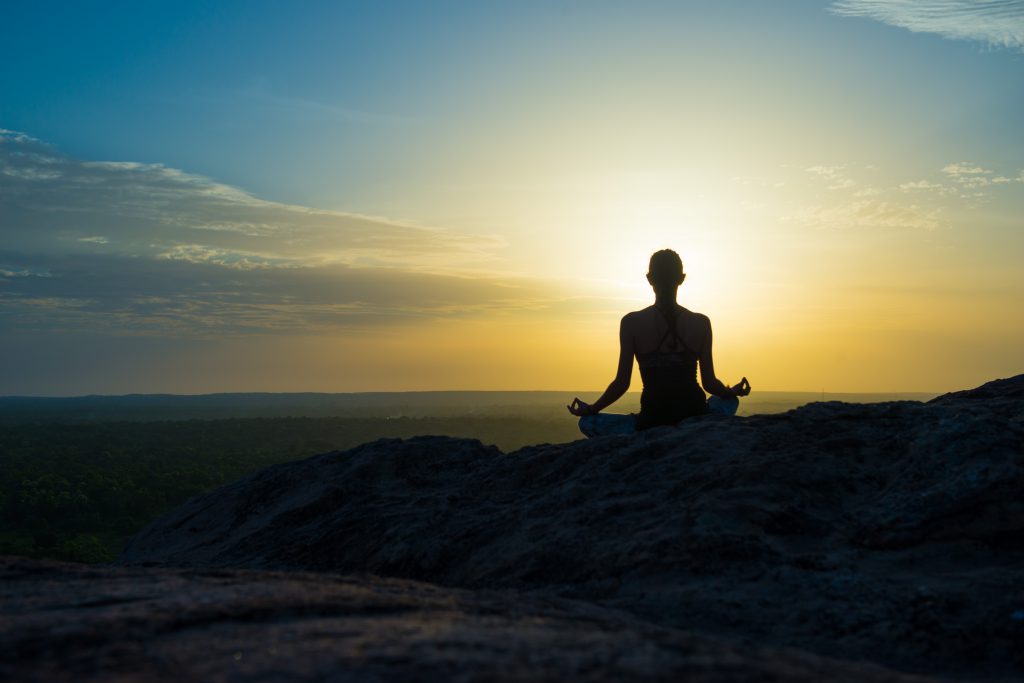
“The sea washes away the ills of all mankind.” ~ Euripides (420 BC)
The regular motion of the waves is hypnotizing.
One can spend countless hours getting lost in my thoughts or meditating in front of the sea, the element that pervades the surface of the Earth with its powerful energy and liquid matter. The breath of the ocean is fascinating, and observing it naturally induces in a state of calm equal only to intense yoga practice.
There is something else that has the ability to systematically push into a gentle state of mind in connection to the elements and Mother Earth. That is diving in all its forms; while scuba diving allows to stay longer underwater, freediving is a sort of active meditation in confrontation with ourselves and the immensity of the ocean. Both disciplines have striking similarities to the essence and purpose of yoga practice, that is to connect inward to the timeless, limitless nature of the spirit or the “true self”.
The deeper and longer one dives, the darker the surroundings and the stronger the pressure on the body and on the mind. The same happens during yoga and meditation practice. While Yin practice strikes a chord in one’s deepest self, Vipassana meditation confronts with the sounds of the abyss of the soul. Accomplishments on the mat as well as under the water amplify as we tune with our breath and with our deepest nature.
 Diving and beachfront yoga are two different yet parallel ways to interact with the air and the water element at the same time. Although both are associated to motion and change, the air element is regarded as the point where consciousness takes on a particular direction or goal, while the water element is considered the river upon which life flows, the healing force that unites different entities and that brings about waves of emotion.
Diving and beachfront yoga are two different yet parallel ways to interact with the air and the water element at the same time. Although both are associated to motion and change, the air element is regarded as the point where consciousness takes on a particular direction or goal, while the water element is considered the river upon which life flows, the healing force that unites different entities and that brings about waves of emotion.
This belief is the driving concept behind my idea of yoga. From this perspective, this practice cannot be separated from its surrounding environment and sources much of its energy from it. At the same time, the much sought after state of mind can be achieved in the water through meditation in kumbhaka (freediving) and in active contemplation (scuba diving). Each practice stands by itself and feeds the other with a variety of ways to balance the mind and the body through the breath.
It is not rare feel rejuvenated when in contact with the sea.
Scientific research has shown that sea air is charged with negative ions, which allow our body to absorb more oxygen. This is one of the reasons why practicing yoga in front of the ocean is particularly beneficial. Other factors that adds up to a beachfront yoga session are the healing effect the sound and the view of the crashing sea waves have on our mind and the proximity to water, which makes up 60% of our body and covers 70% of the earth surface. Don’t we belong to the ocean?
MandalaBlue is a combination of words particularly meaningful to me and which reflect this idea.
Meaning “circle” in Sanskrit, Mandalas are symbols representing the universe and wholeness and are used as spiritual guidance tools to induce meditation and trance. With their intricate geometrical patterns and interconnected shapes and colours, mandalas are used as a form of deep concentration and meditation aimed at reminding us of our relation with infinity, which exists within and beyond our being. When we meditate concentrating on a mandala, it is common to feel a gradual fall into its colours and patterns and experience intuitive thoughts. A bit like when we dive 20mt with one breath and we observe the water turning into darker and darker shades of blue and our mind gets clearer and clearer as we experience the effects of breath-holding on our mind.
The word Blue is a tribute to the ocean, to the Big Blue that covers all and makes all this possible, allowing us to plunge in the Earth’s energy that surrounds us and composes us in taking a couple of strokes or by taking a long look at the horizon.
MandalaBlue Yoga is currently the only yoga studio on the three Gili islands that is right on the beach. A space where to connect with yourselves and with nature at the same time, MandalaBlue is more a concept than a specific place; it is an approach that focuses on finding rhythm in the motion of the waves just in front of you as you practice yoga and encourages you to explore the water element.
Try the MandalaBlue formula, and you will discover than whether trying to find your own dimension and overcome your boundaries or filling your lungs with air to balance your mind and spirit, connecting with the ocean as you practice makes a big, big difference.
Published on Yoga Journal Singapore


